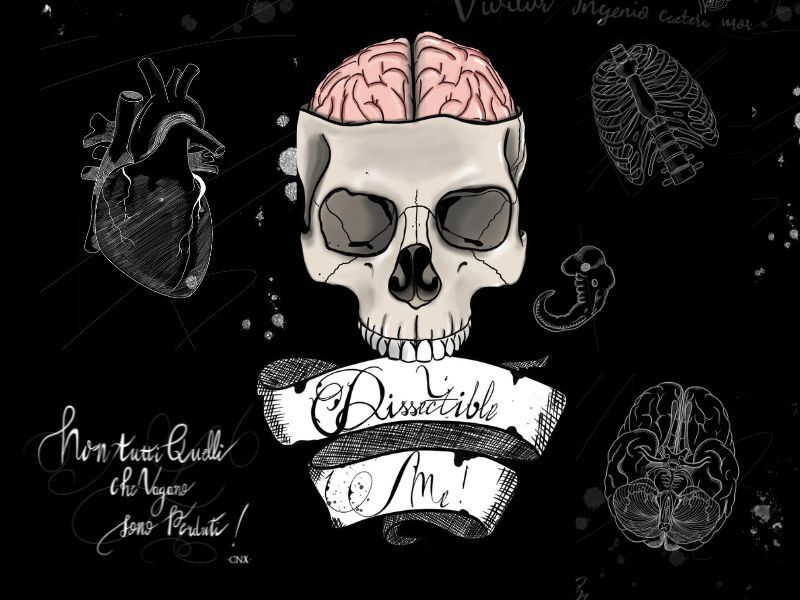Dissectible Me 5 minute anatomy
Welcome to dissectible me. Human anatomy in 5-minute chunks. In this weekly podcast, we will cover everything from introductions to bodily systems, to some very focused but fascinating nuggets of anatomical knowledge. One rule, it must be covered in 5 minutes only! Whether you are a student exploring the content for the first time, a healthcare professional refreshing your anatomy knowledge, or someone with 5 minutes to kill, this podcast is suitable for anyone with an interest in the human body. So join us as we set the timer and rattle through the captivating microcosmos that is human anatomy. Narrated by Sam Webster & Chris Summers
Episodes
Friday Feb 21, 2025
Hip joint
Friday Feb 21, 2025
Friday Feb 21, 2025
The bones, ligaments and synovial bits of the hip joint between the acetabulum of the pelvis and the head of the femur.
Friday Feb 14, 2025
Lumbosacral plexus
Friday Feb 14, 2025
Friday Feb 14, 2025
The lumbosacral plexus is the anatomy of the low back and pelvis that forms the major nerves of the lower abdomen, pelvis and lower limb. It is not as susceptible to injury as the brachial plexus so clinically we understand the anatomy of this plexus a little differently, but it is important to be able to recall the spinal nerve roots of the major nerves here and the functions that will be lost if injured.
Friday Feb 07, 2025
Upper and lower motor neurones
Friday Feb 07, 2025
Friday Feb 07, 2025
Understanding the anatomy of upper and lower motor neurones can be very useful when trying to use the results of an examination, signs and symptoms to diagnose the location of a neurological lesion.
Friday Jan 31, 2025
Spinal tracts neuroanatomy
Friday Jan 31, 2025
Friday Jan 31, 2025
Spinal tracts are bundles of neuronal axons that run through the spinal cord and brainstem. If we think about how neurones work, how they are bundled together with similar functions, which direction the action potentials are running in and the names of these tracts, we can remember what they all do.
Friday Jan 24, 2025
Referred pain
Friday Jan 24, 2025
Friday Jan 24, 2025
Referred pain is felt at a different location in the body from the site that is causing the pain. There seems to be an anatomical reason for this and understanding the theories can help with diagnosis and patient care.
Friday Jan 17, 2025
Urethra
Friday Jan 17, 2025
Friday Jan 17, 2025
Talking about the anatomy of the urethra and better understanding why women get more urinary tract infections than men.
Friday Jan 10, 2025
Blood supply to the hand
Friday Jan 10, 2025
Friday Jan 10, 2025
The radial and ulnar arteries both supply blood to the hand and meet as two arches that send branches off to the fingers. This anatomy gives redundancy for the blood supply to the hand so let's talk about where these arteries run and how they branch.
Friday Dec 20, 2024
Thumb movements
Friday Dec 20, 2024
Friday Dec 20, 2024
The names of the movements of the thumb can be tricky to remember, but knowing the movements gives you the names of the muscles that cause these movements.
Wednesday Dec 11, 2024
Hand movements anatomy (wrist and fingers)
Wednesday Dec 11, 2024
Wednesday Dec 11, 2024
Relating the movements of the hand to the nerves responsible is an important clinical skill. Let's see if I can describe the movements of the wrist and fingers, and the nerves that trigger these movements in 5 minutes.
Thursday Dec 05, 2024
Erection
Thursday Dec 05, 2024
Thursday Dec 05, 2024
The anatomy of erection of the clitoris and the penis is very similar and a rather neat mechanism involving the parasympathetic nervous system.

Thanks for listening
Check back weekly for new episodes or take a look at our back catalogue of varying topics by clicking the 'load more' button above.
Narrated by Sam Webster & Chris Summers





